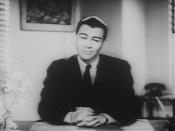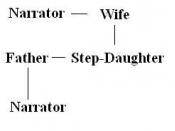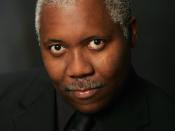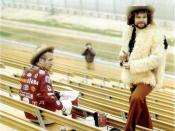LOOKING FOR WORK Different countries have different cultures. The language, beliefs, values, norms, behaviors, and even material objects that are passed from one generation to the next. The narrator comes from Mexico who lives in the United States. The narrator has some special understanding which different with his family during his summer vacation. His family is not very wealthy sot he story happens on the narrator looking for the work to earn the money. How does the narrator find out what difference between his family and the family of his white friends or Mexican? The answer should be in narrator's routine and contacting with his friends.
The narrator's life is like ordinary Mexican, but he does not want it at all. Usually, Mexican children's lives are very playful; they always play some interesting things after school or during the vacation. For example, they go to swimming or play at the ditch with some toys, which made by their self.
The narrator also feels their life style is different from American. " Our own talk at dinner was loud with belly laughs and marked by our pointing forks at one another. The subjects were commonplace." ( Soto, page 32 ) We could know something here; the narrator does not really like style of his family dinner. " For a weeks I had drunk Kool-Aid and watched morning reruns of Father Knows Best, whose family was so uncomplicated in its routine that I very much waited to imitate it. The first step was to get my brother and sister to wear shoes at dinner." ( Soto, page 32 ) WANG 2 The narrator tries to change their style of dinner but does not success. The narrator may be feel that kind of dinner style let him feel cleaner and politeness. He is trying to learn something from white people and find out their life style is different with white people.
The narrator thinks all the white families are very rich and have very comfortable lives. " There were no beatings, no rifts in the family. They wore bright clothes; toys tumbled form their closets. They hopped into bed with kisses and woke to glasses of fresh orange juice." ( Soto, page 36 ) The narrator kind of admires the way that white families treat their children. This is not really live of the white kids; at least, most of my white friends do not that kind of very comfortable childhood. The narrator always compares with their true life. The true fact of white people's life is not really like that what the narrator see in the program on the television; some of white children may have that life style but it is not many now. White people are more politeness than other people are; it is true in my mind but it does not mean everyone of white person is very politeness.
" May I have the mashed potatoes?" asks Beaver with a smile. " Sure, Beav," replies Wally as he taps the corners of his corners of his mouth with a starched napkin. The father looks on in his suit. The mother, decked out in earrings and a pearl necklace, cuts into her steak and blushes. Their conversation is politely clipped." ( Soto, page 36 ) This effects narrator very much because it becomes his image about white people. In real life, how many white families do this kind of conversation during the dinner? I think it is not many in our society now. It is very stiff and mechanical life.
WANG 3 What is the difference between Mexican family and white family? Their cultures make them be different. The white families treat their children more nice than Mexican family, make children independently at the same time and let the children find out what they want to be in the future. On the other hand, Mexican families are more open than white families. Mexican families treat their children not very straight; in other words, they usually will not limit their children that much. For example, I am living in the apartment right now which have about forty-nine white people, fifty percents is Mexican and the rest is me and my room-mates. I always see the Mexican children are playing around the swimming poor and shouting each other. But I am not often seeing the white children do that in the apartment. Oppositely, most of the white children have too more extra self-confident than the Mexico children. In our society, mostly white people always be in the white people group, Mexican always be in Mexican group, black people and Asian do the same thing, too. The narrator tries to change his brother and sister to be friend with other white children. " I tried to convince them that if we improved the way we looked we might get along better in life. White people would like us more. They might invite us to places, like their homes or front yards. They might not hate us so much. My sister called me a "craphead," and got up to leave with a stalk of grass dangling from her mouth. " They will never like us."" ( Soto, page 37 ) The narrator tries to be a friend with white children but he does not success, too. " David called again. Rick got up and slapped grass from his pants. When I asked if I could come along he said no." ( Soto, page 38 ) What are really differences between the family of the Mexican and American? I think most of the white families are very politeness and have more virtue of patience; WANG 4 Mexican families are not many like that. But Mexican families make their children easily to be friend with other people. In the story, the white family of the narrator's friend is very kind but does not like the narrator and his brother. On the other hand, the family of his other friend, little John, treats the narrator very nicely. That is a big difference between the family of the white and Mexican.






